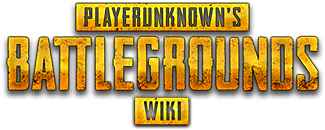The following is an official dev log from the BATTLEGROUNDS website.
Contents[]
Players,
Today on the dev blog we will be looking at the vehicle creation process. When we are deciding on vehicles to add to the game, we consider how they will affect game-play, but also if they will fit with the location of the island.
The vehicle creation process follows a similar process to characters, with reference images passed to our vehicle artists first. They will then create a basic model of the vehicle in question, and pass it onto the art director for approval. Once the model has been approved, the artist will then move to creating a high-poly version of the vehicle.
Again this process will be reviewed by the art director at each stage to ensure the model is accurate. Once this is achieved, a final render of the model is created before moving onto creating the low-poly mesh.
With the UAZ, we wanted 3 different cabin designs, so along with the low-poly mesh, the model was broken into separate parts to enable this variety.
Now the vehicle is ready to be brought into the game. For this I will hand the post over the JC, our game design lead and the man responsible for getting vehicles working well in the game.
Hi, my name is JC and I’m the game design lead for PLAYERUNKNOWN’S BATTLEGROUNDS.
Today, I would like to first introduce the vehicles that will help players get around the island. For launch, we intend to have 5 types of vehicles available.
Our Buggy:
Our Sedan based on the Dacia 1300:
Our Truck based on the ZIL 313 (WIP):
Our Speedboat based on the PG-117 Speedboat (WIP):
Below is a short list of key components that define how driving a vehicle feels.
- Body of the vehicle;
- Mechanical values/parameters;
- Physics collision.
In the first phase of production, exterior and body that are aligned with the overall concept of the vehicle will be determined and the artist will begin working on the vehicle. If we decide to use a vehicle that looks similar to what’s available in real life, the spec of the actual car can be used as a good reference. But for a vehicle like the buggy which is unique, you have to consider things like wheel base and center of gravity.
While the artist is working on the model, I use a temporary vehicle model, which I call a “Tofu car” because it looks like a block of tofu!
I use this temporary model and tweak different mechanical values in Unreal Engine until I get a well-balanced performance profile with a good feel to the specific driving features required for the type of the car I’m working on. In this process, I will adjust a lot of the parameters including everything from torque curve to Ackermann Accuracy (a parameter I didn’t know before working on vehicles for BATTLEGROUNDS).
When the artist has the model completed, I will import it into the game, dress it with materials and attach the different components that are necessary for the car to function. I then set up the animation so that both suspension and gear driving system will move realistically.
Once all this is completed, cameras, lights and FX sockets are attached to the car.
I then move on to the extremely painful process of setting up the physics collision, which is like walking a tightrope as I have to strike a balance between server computing costs, realistic collision and how it will affect the game-play in an open world map.
After each round of adjusting, I go through a long period of repeated test driving sessions to see if driving feels and looks as real as possible. I’ve actually calculated the mileage of each vehicle after testing and it was approximately 20,000 km on average.
There are still some issues that I need to tackle in the near future, but overall I am very satisfied with how our vehicles feel right now!
Happy driving!
JC













